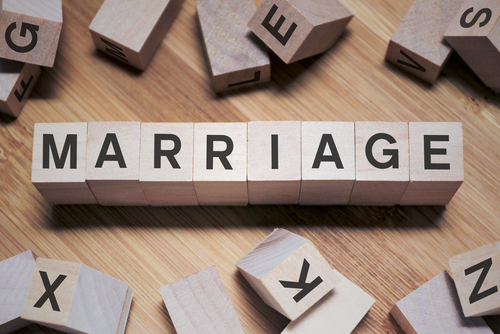Common-Law Marriage and How It Applies to LGBTQ+ Couples

Common-law or sui juris marriage was originally an irregular union involving a couple who lived together and represented themselves publicly as a couple. It was once legally recognized throughout America. Today only nine states and the District of Columbia accept and recognize common-law marriage. With same-sex marriage officially lawful throughout America, it’s important to understand what rights LGBTQ+ couples have with respect to common-law marriage. This very issue recently came under scrutiny in the state of Colorado.
Understanding the History
Many Western countries accepted common-law unions as legal. In 1563, the Council of Trent of the Roman Catholic Church decreed that a marriage could only be valid if it was formally solemnized by a priest. Many Western nations adopted this ruling, including Protestant-led nations. Although Great Britain formally adopted a law banning informal unions in 1753, it did not apply to the British Colonies in America. Gradually, individual states began to abolish sui juris nuptials. Currently only Colorado, Iowa, Kansas, Montana, Oklahoma, Rhode Island, Texas, New Hampshire, Utah and the District of Columbia are the remaining jurisdictions where such unions are still fully legal.
Looking at Colorado
Recently, the Supreme Court of Colorado ruled to change the way common-law marriage is defined. This was done to be more inclusive of LGBTQ+ couples. They sought to modernize the over-30-year-old legal standard to acknowledge changes in society. The Colorado Supreme Court justices offered three opinions in agreement. These created a new legal standard that’s less rigid in its definition and, more importantly, gender neutral in its language. Per this new standard, the only considerations for recognizing a common-law marriage are the following:
- Did the couple mutually intend to enter into a marital relationship?
- Did the couple’s actions/behavior support that decision?
This new standard differs from the old 1987 definition, which used the following factors to define a common-law partnership:
- Joint property ownership
- Shared bank accounts
- Joint tax returns filed
- Woman taking man’s surname
- Shared offspring with the man’s surname
- Living openly and presenting as a married couple
The justices acknowledged in their decision that common-law marriages may look different to different queer couples. It’s especially the case when using the word “partner,” which might be synonymous with “spouse” to some and not others.
Making Adjustments for LGBTQ+ Persons
In their ruling, the Colorado Supreme Court indicated that definitions of informal unions needed to focus more on the individuals involved and less on outside perception. For example, while same-sex marriages may be legal throughout the United States, many queer people may not feel safe or comfortable publicly representing themselves as married due to fear of discrimination. Although factors under the old legal standard can still be considered, the Court felt that they should be viewed in the larger context of the couple’s relationship.
Exploring the Larger Implications
One of the other questions that Colorado’s Supreme Court considered was whether LGBTQ+ couples had been in common-law marriages before the 2015 United States Supreme Court ruling. In ruminating over that question, it brought up the implications of the old legal standard for all common-law unions in the state. Several of the old factors don’t always apply to married couples of any sexual orientation or gender identity, including shared assets, having children and adopting surnames. The new legal standard requires more scrutiny and investigation from the courts. Regardless, both judges and LGBTQ+ advocates are confident that the validity of sui juris unions can be determined fairly on a case-by-case basis moving forward.
While Colorado is one of only nine states where common-law unions are legal, making the law more inclusive for queer couples is a natural progression in legalizing same-sex unions. If LGBTQ+ people are entitled to the same legal protections through marriage as heterosexual people, common-law marriage definitions need to be reviewed and rewritten to be more inclusive in the applicable jurisdictions.














